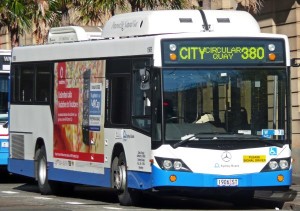 Some bods in the European Commission have been studying what influences how people travel to work. They looked at 112 cities in Europe with populations between 100,000 and 500,000 residents and used a mathematical model to predict whether commuters would choose public transport over cars, biking over walking.
Some bods in the European Commission have been studying what influences how people travel to work. They looked at 112 cities in Europe with populations between 100,000 and 500,000 residents and used a mathematical model to predict whether commuters would choose public transport over cars, biking over walking.
While we can’t necessarily translate the results to the sprawling metropolis that is Sydney, it might be relevant for the smaller conurbations of NSW. The research itself reinforces previous research that was done in less detail, but you could say that the findings are a little obvious.
- If there are more buses and more people, public transport is used more (obvious because it’s both more buses and more people, although the survey doesn’t say whether it’s proportional)
- If monthly bus tickets are cheaper, public transport is used more (obvious because people love cheap transport)
- If the weather is rubbish, people don’t use public transport (obvious because people hate walking to public transport and waiting in the rain. What it didn’t define is whether this also applies if it’s really hot because buses are air conditioned and walking isn’t)
- In cities with lots of students, more people cycle, walk and use public transport (obvious because students are usually strapped for cash)
- Cities with more cycle paths (separate to vehicle lanes) had larger numbers of people cycling (obvious because cyclists don’t like riding next to vehicles)
- Wealthier cities (and we’re not sure what this means), had more people taking the car to work, but also more people walking and taking public transport (this is not obvious because it could be a demographic reason, such as a lower proportion of elderly or families with kids)
- Public transport is used less when there’s a higher proportion of elderly people and families with kids (obvious because the elderly don’t go out every day, and families with kids find it more convenient and probably cheaper to take a car)
The European Commission is not very favourable towards cars and has said that cities can improve their public transport and walking/cycling proportions by making it unfriendly to drive a car. We are in favour of cars, but we’re not in favour of unnecessary journeys. If we eliminated a significant proportion of our unnecessary journeys, our traffic would flow smoothly. By unnecessary, we mean where it’s practical to walk or bike in less than half an hour when the weather is good, or dropping your kids off to school when you only live 2km from the school.
Despite spending millions on this research the authors didn’t seem to consider some important factors such as out-of-city commuting (e.g. someone driving from Penrith to Sydney wouldn’t have been considered), population density, urban sprawl, and cultural attachment to cars.
